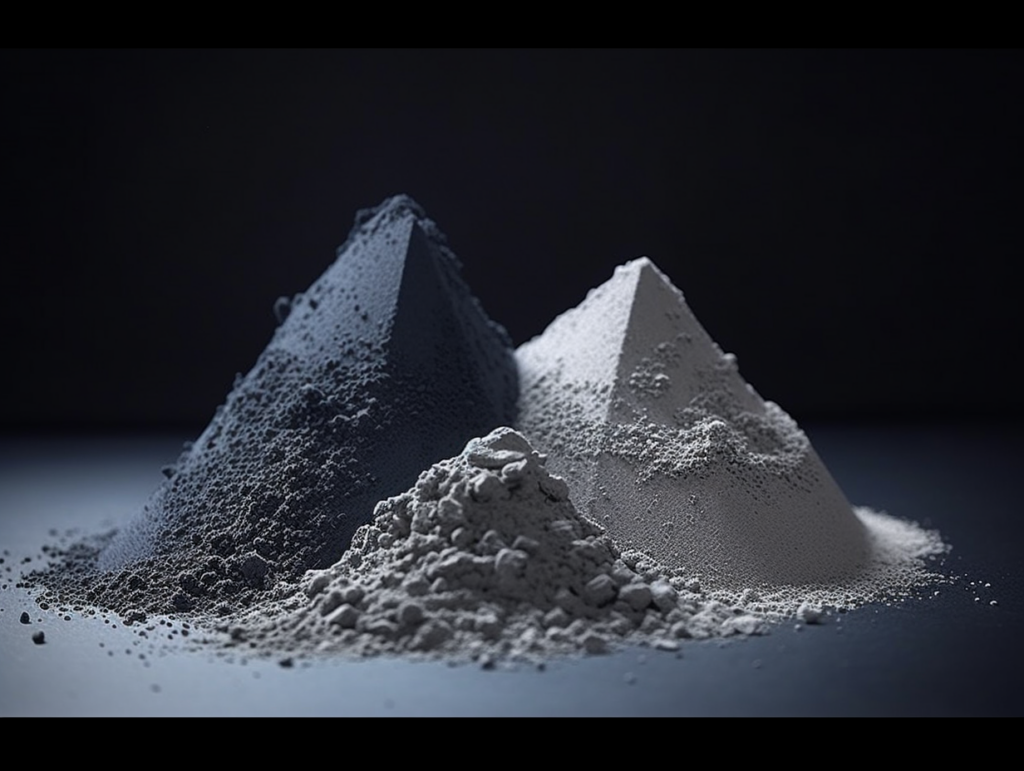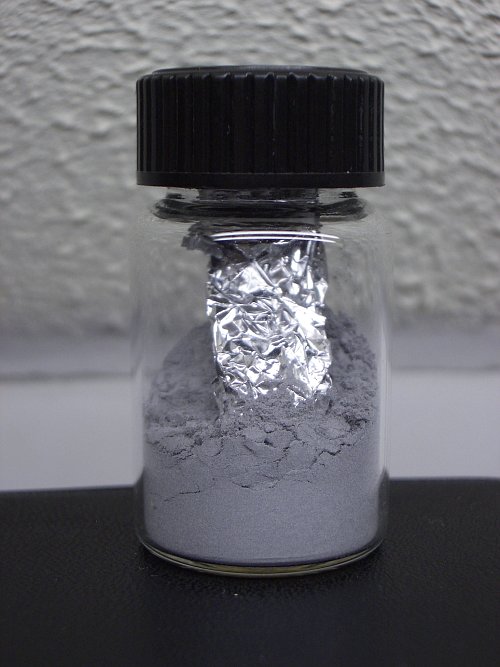Overview of Al 3103 Powder
Al 3103 powder is an aluminum alloy powder that contains manganese as its major alloying element. It offers excellent corrosion resistance and good mechanical properties, making it suitable for a wide range of applications.
Some key features of Al 3103 powder include:
- Excellent corrosion resistance, especially in marine environments
- Good mechanical properties and machinability
- Lightweight yet strong
- Can be anodized for color finishes
- Melting point around 655°C
- Density around 2.73 g/cm3
Al 3103 is commonly used in applications like:
Applications and Uses of Al 3103 Powder
| Application | Details |
|---|---|
| Marine and coastal structures | Excellent corrosion resistance in saltwater environments makes it suitable for marine hardware, boat hulls, offshore platforms etc. |
| Architectural buildings and structures | Used for roofs, sidings, windows and doors where strength along with corrosion resistance is required. |
| Food processing and packaging | Approved for food contact. Used for cans, foils, kitchenware etc. |
| Heat exchangers and cooling fins | High thermal conductivity allows efficient heat transfer. |
| Chemical containers and process equipment | Resistant to many chemicals and petrochemicals. |
| Automotive parts | Used for wheels, panels, hinges, frames etc. |

Types and Grades of Al 3103 Powder
Al 3103 powder is available in different sizes, shapes and purity levels:
- Particle sizes: Ranging from 10 microns to 150 microns. Ultrafine powders below 10 microns also available.
- Shapes: Spherical, flattened spherical and irregular powder shapes.
- Purity: Available in commercial purity or high purity (99.9%) versions. Custom purity levels also possible.
- Alloy grades: Al 3103 is the most common grade. Other grades like 3003, 3004, 3105 with slightly varied alloying also available.
Specifications of Al 3103 Powder
| Specification | Details |
|---|---|
| Density | 2.70 g/cm3 |
| Melting Point | 655°C |
| Ultimate Tensile Strength | Around 290 MPa |
| Elongation at Break | 12% |
| Hardness | 80 HB |
| Thermal Conductivity | 120 W/m-K |
| Electrical Resistivity | 0.0000330 ohm-cm |
| Modulus of Elasticity | 69 GPa |
| Poisson’s Ratio | 0.33 |
| Thermal Expansion | 24 μm/m-°C |
Design Considerations for Al 3103 Powder
Al 3103 powder can be designed and customized for additive manufacturing or other applications by optimizing:
- Alloy composition: Manganese content can be varied from 0.8% to 1.5% for required strength and corrosion resistance. Magnesium, chromium, zinc or copper may be added.
- Powder size and shape: Spherical powders around 20-45 microns offer good flow and packing density. Finer or irregular shapes possible for higher resolution.
- Powder porosity: Partially porous powders can improve flow and compaction.
- Surface modification: Coatings or lubricants can be applied to improve powder flow.
Standards and Compliance for Al 3103 Powder
Some key standards for aluminum alloy powders:
- ASTM B801 – Standard Specification for Consolidated Aluminum Powder Metallurgy Products
- ASTM B211 – Standard Specification for Aluminum and Aluminum-Alloy Powder and Powder Metallurgy Products
- ASTM B214 – Standard Test Method for Sieve Analysis of Metal Powders
- ISO 44001 – Colored anodized aluminium powder
- RoHS Compliant and REACH Registered
Suppliers and Pricing
Al 3103 powder can be sourced from leading global suppliers such as:
| Supplier | Description | Indicative Pricing |
|---|---|---|
| Micron Metals | Broad range of Al alloy powders | $20-30 per kg |
| Sandvik Osprey | Customized powders | $25-40 per kg |
| Hoganas | Specialize in P/M alloys | $30-50 per kg |
| Makin Metal Powders | Tolling services offered | $25-35 per kg |
| Duke Scientific Corp | Ultrafine and specialty powders | $50-100 per kg |
Pricing depends on order volume, particle size, shape, purity and customization.
Installation, Storage and Handling
- Al 3103 powder should be stored in sealed containers in a dry, inert environment to prevent oxidation and contamination.
- Avoid sources of moisture during handling as powder can be hygroscopic. Use appropriate grounded equipment.
- Powder can be abrasive. Follow safety precautions and wear suitable PPE during handling.
- Carefully measure and meter powder during dispensing to prevent dust generation or spillage.
- Post-process finished components by anodizing, passivation or coatings to improve corrosion resistance.

Choosing a Reliable Al 3103 Powder Supplier
Some key considerations when selecting an Al 3103 powder supplier:
- Experience and technical capability to produce customized powders
- Quality certifications and compliance with safety standards
- Ability to deliver consistent quality and performance
- Reasonable minimum order quantities and lead times
- Capability to provide testing data and CoAs
- Competitive and transparent pricing -responsive technical and sales support.
Analyze process requirements and specifications thoroughly before shortlisting suppliers. Evaluate test samples to ensure powder meets the needs.
Pros and Cons of Al 3103 Powder
| Advantages | Limitations |
|---|---|
| Excellent corrosion resistance, especially in marine environments | Lower strength than some aluminum alloys |
| Good machinability and finishing | Susceptible to galvanic corrosion if contact with certain dissimilar metals |
| Lightweight compared to steels | Not heat treatable to high strength |
| Non-toxic and safe for food contact | Poor weldability compared to some alloys |
| Less expensive than stainless steel | Not recommended for high temperature applications |
| Recyclable and environmentally sustainable | Sensitive to hot cracking during welding |
Comparison Between Al 3103, 3003 and 6061 Alloy Powders
| Parameter | Al 3103 | Al 3003 | Al 6061 |
|---|---|---|---|
| Alloying elements | Manganese | Manganese and magnesium | Magnesium and silicon |
| Strength | Medium | Low | High |
| Corrosion resistance | Excellent | Good | Moderate |
| Weldability | Poor | Good | Excellent |
| Machinability | Excellent | Good | Difficult |
| Cost | Low | Very low | Moderate |
| Applications | Marine, packaging | General fabrication, storage tanks | Structural components, marine |

FAQ
Q: What is Al 3103 powder used for?
A: Al 3103 powder is used for additive manufacturing, powder metallurgy pressing, metal injection molding, and thermal spray coatings. Its excellent corrosion resistance makes it suitable for marine hardware, food packaging, architectural panels, heat exchangers, etc.
Q: What is the chemical composition of Al 3103?
A: The typical composition is manganese (1.0-1.5%), aluminium (balance), iron (0.7%), silicon (0.6%), copper (0.20%), magnesium (0.05-0.20%), chromium (0.05-0.20%), zinc (0.10%).
Q: What is the difference between Al 3103 and 3003 alloy?
A: Al 3103 has higher manganese content giving better strength and corrosion resistance than 3003 alloy which has lower manganese. 3003 alloy has slightly better formability and weldability.
Q: What powder size is recommended for AM?
A: For most binder jetting or powder bed fusion AM processes, a powder size range of 15-45 microns is recommended for Al 3103. Finer powders below 10 microns can produce higher resolution but may affect flow and packing.
Q: Does Al 3103 powder require special storage?
A: Al 3103 powder should be stored in an inert, dry environment sealed from atmosphere to prevent oxidation. Avoid moisture exposure as the powder can be hygroscopic.
Q: How is Al 3103 powder made?
A: It is produced by gas atomization where molten alloy is atomized into fine droplets which solidify into powder particles. The powder can be further classified into specific sizes and shapes.
Q: Can you heat treat Al 3103 powder?
A: Al 3103 cannot be heat treated or precipitation hardened since it does not contain Cu or other precipitating solutes. Strength can only be increased by cold working or strain hardening.
Q: What is the density of Al 3103 powder?
A: The density of Al 3103 powder is around 2.70 g/cm3, which gives it a lower weight than iron or copper alloy powders.
Q: Is Al 3103 powder recyclable?
A: Yes, Al 3103 powder can be easily recycled. Powder residues or component scrap can be remelted and atomized into fresh powder. This makes it a sustainable material option.
Q: Does Al 3103 powder oxidize easily?
A: Al 3103 forms a protective oxide layer which provides good corrosion resistance. However, the powder can still slowly oxidize during prolonged air exposure at elevated temperatures. Proper storage is important.
Conclusion
Al 3103 powder offers an excellent combination of corrosion resistance, strength, machinability and recyclability. With moderate cost, it provides a lightweight, sustainable alternative to stainless steels in demanding applications like marine hardware, chemical equipment, and food packaging.
Key properties like alloy composition, powder size and shape distribution can be tailored to fit application requirements. With proper handling and storage, Al 3103 powder can provide consistent, reliable performance in powder metallurgy processing and additive manufacturing.





